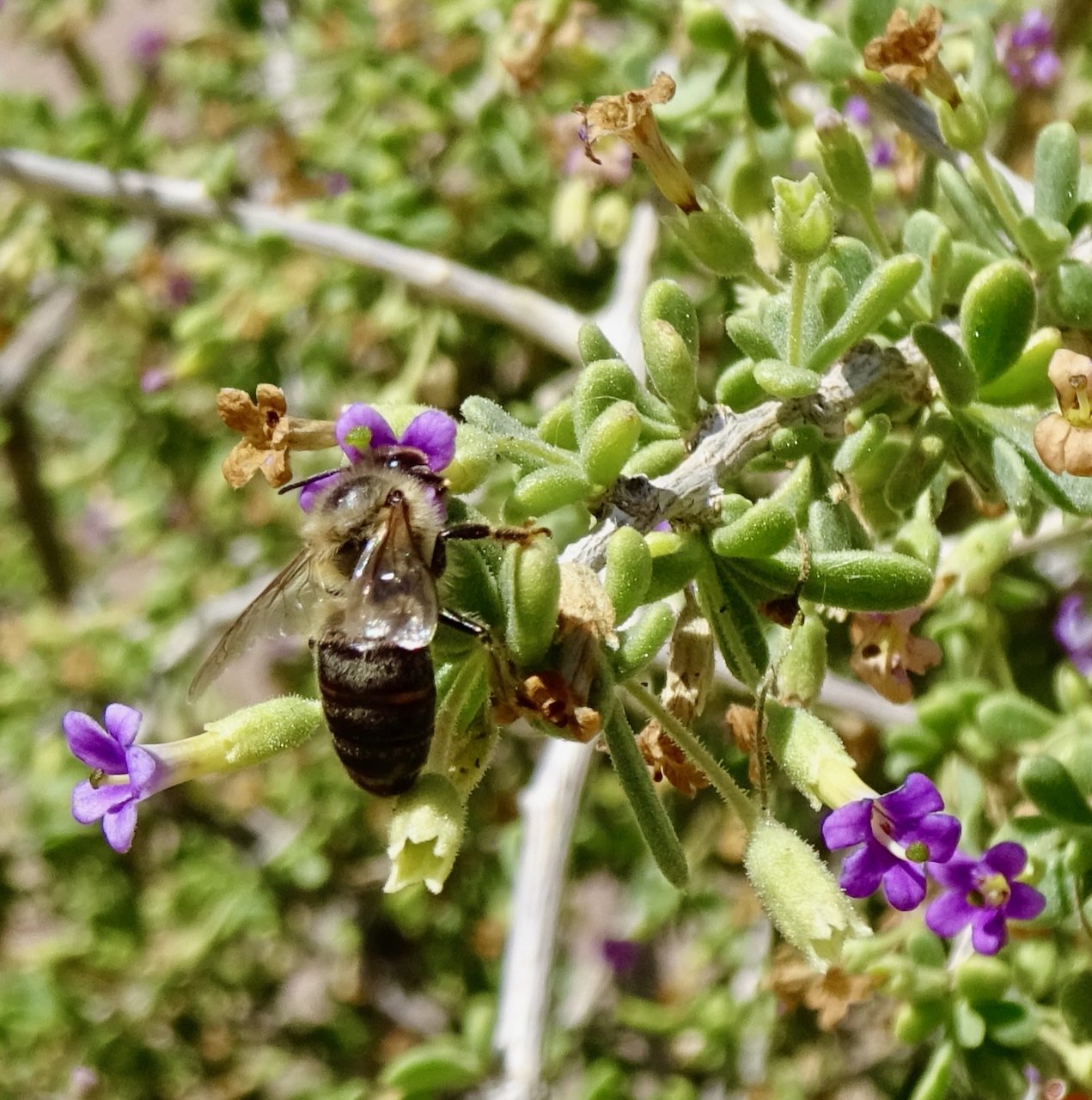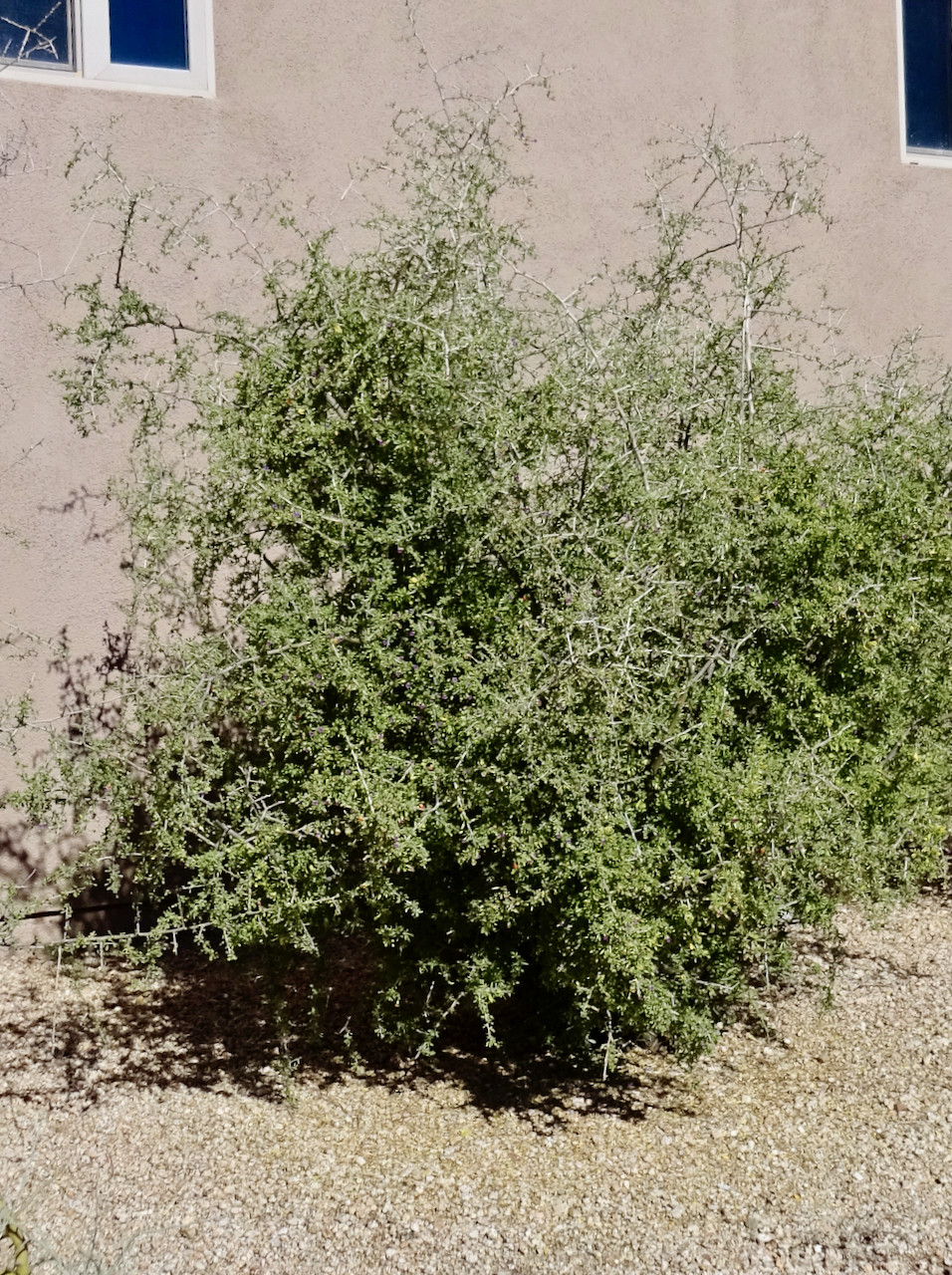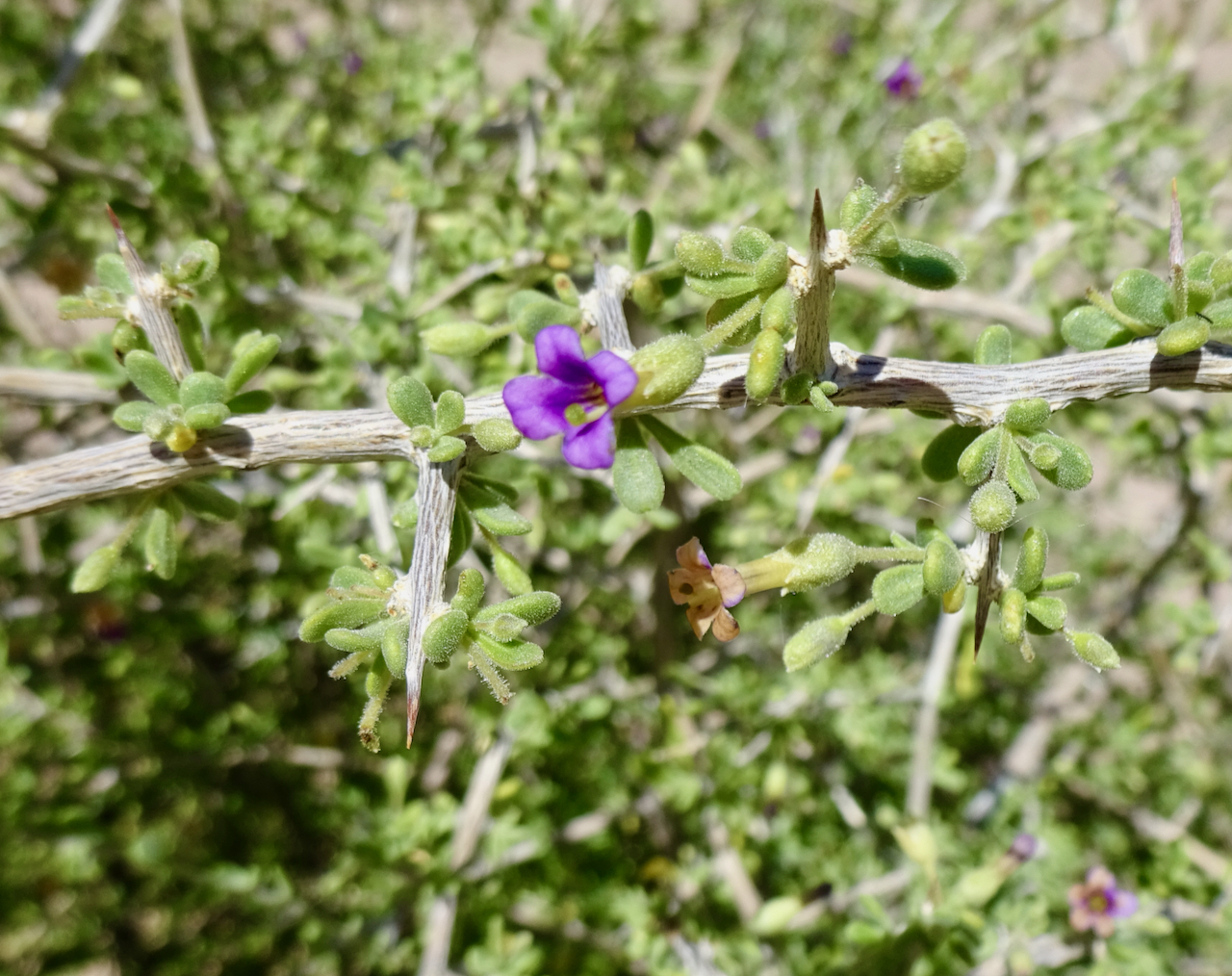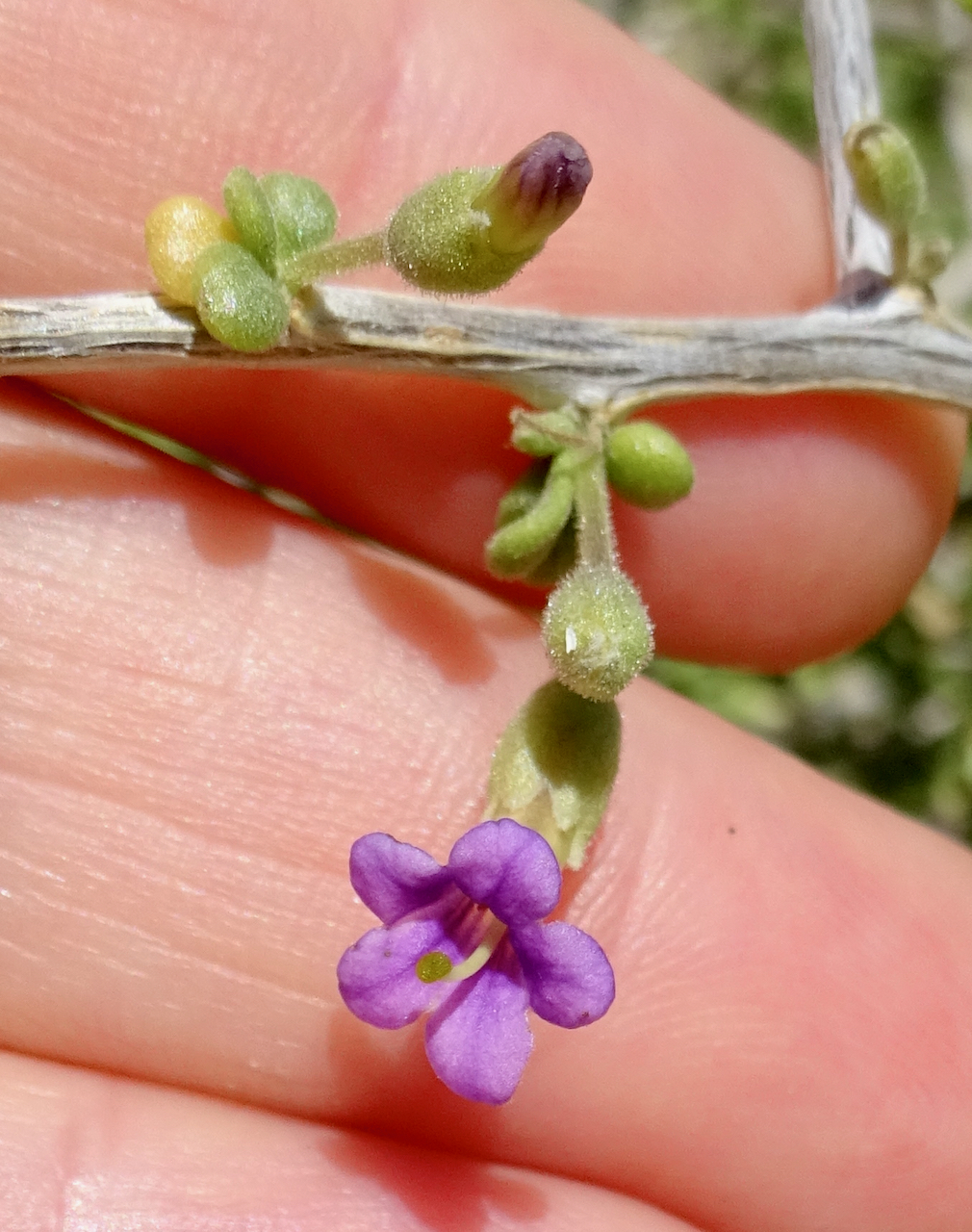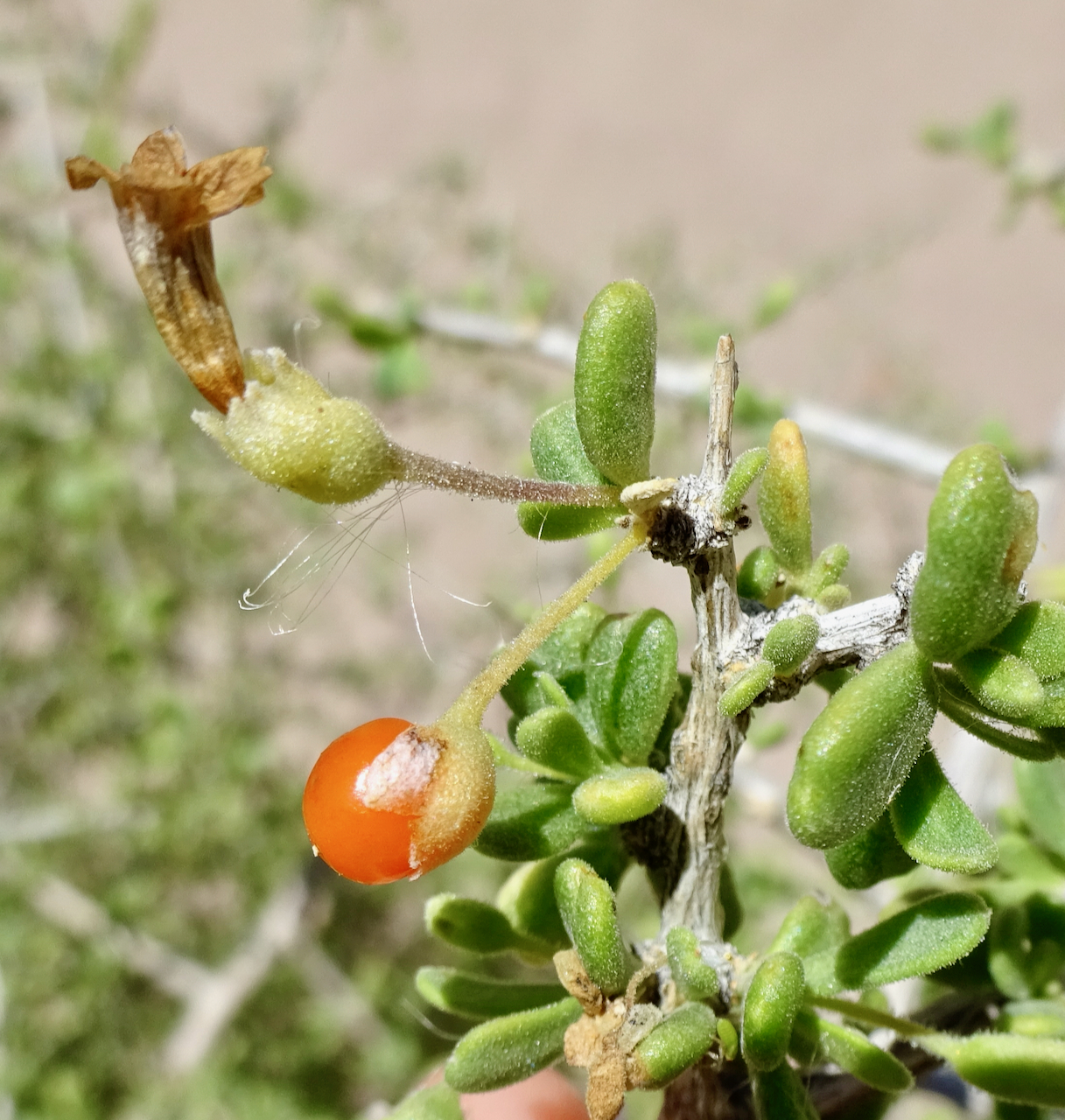Fremont Wolfberry, Fremont desert thorn
Lycium fremontii
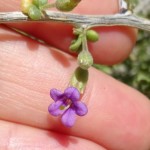
About the Plant
Fremont thornbush, a much-branched shrub that can grow to 8-9 feet and almost as wide, is native to southern Arizona and adjacent California and Mexico. Purple flowers appear in spring, followed by red fruit loved by birds and other animals. The small, clustered leaves are drought deciduous. It is not unusual for the plant to be without leaves for several months of the year.
Grow Fremont thornbush in full sun in soil with good drainage. It can exist on natural rainfall once established but a monthly soaking in summer will help prevent complete leaf loss and perhaps stimulate a second flowering. Prune only to remove a wayward branch as the dense complex branching is natural for this plant.
Wildlife value: bees enthusiastically feed on the flowers and both hummingbirds and butterflies visit them. The red fruit is eaten by birds, including quail and doves, and probably small animals as well. The dense branching provides protection for birds and may be used as a nest site. An exceptional wildlife plant!
More Information
Botanical Key to Lycium (wolfberry) Species in Arizona
Map of distribution in US (yellow indicates plant is native but rare)
Technical botanical description from SEINet
In books:
Native Plants for Southwestern Landscapes by Judy Mielke, page 183, 186.
Trees and Shrubs for the Southwest by Mary Irish, page 230.
